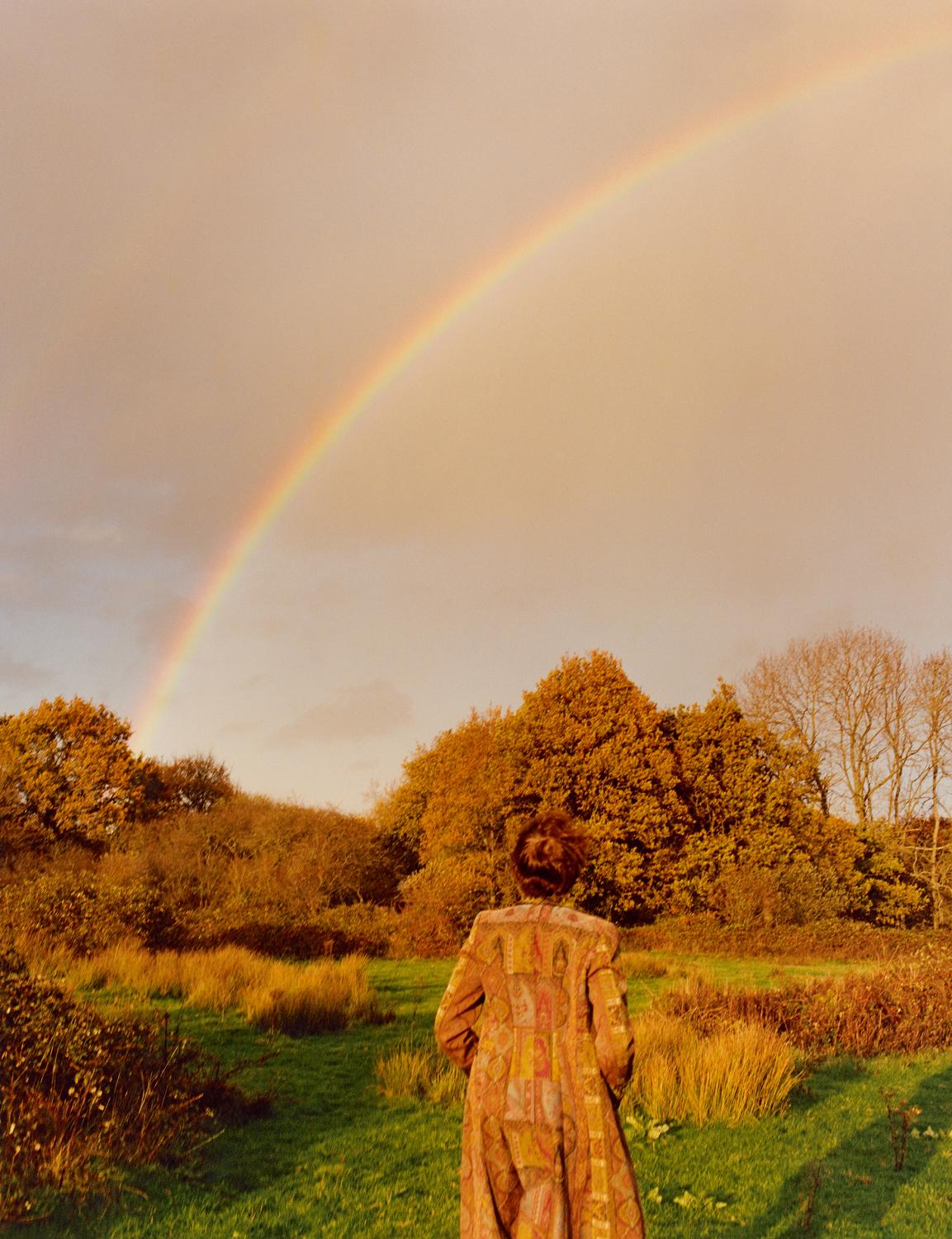At Knepp Castle Estate, England’s first lowland rewilding project has proved that if nature is allowed to take its own course, magic happens. Nightingales, white storks, violet dor beetles are all back. Isabella Tree, 56, now has her sights on our manicured gardens.
“Thorny scrub is what it’s all about. We have zero tolerance for it in our landscape, but this is where you get unbelievable volumes of feeding birds — and birdsong.” Isabella Tree is standing in a messy scrap of landscape a 20-minute taxi ride south of Horsham in West Sussex. We are in search of English longhorn cattle, deer, white storks and Tamworth pigs (which will prove very elusive). It’s far from the romanticised vision of our green and pleasant land.
All around us on Knepp Castle Estate are mounds of dense dog rose, outcrops of prickly hawthorn and blackthorn, unruly brambles and, underfoot, sticky clumps of coarse grass and a whole cornucopia of cowpats, anthills, neat rabbit droppings and swirls of worm casts, which Isabella deliciously describes in her 2018 bestselling book, Wilding: The Return of Nature to a British Farm, as “tiny pyramids of worm excrement like squiggles of piped chestnut puree”. This, she tells me, is the sort of scrubby-looking landscape we should be celebrating if we have any hope of reviving the numbers of the trees, birds, butterflies, bats, worms, beetles, hedgehogs and other creatures that are at risk because of over-farming and climate change.
Isabella is tall, with sparkly blue eyes, scrubbed skin, low-maintenance short brown hair and a youthful, smil-ey face. She pulls a long tailored coat over her boyish jumper, shirt and jeans — her “uniform”, she says — above wellington boots. While I stumble and slide around, at one point slipping headlong into a deep mud clot, she ambles about with the poise of a mountain goat, stopping to inspect a cowpat in search of dung beetles. Her husband, Charlie Burrell, once found 23 different species of beetle on a single pat.
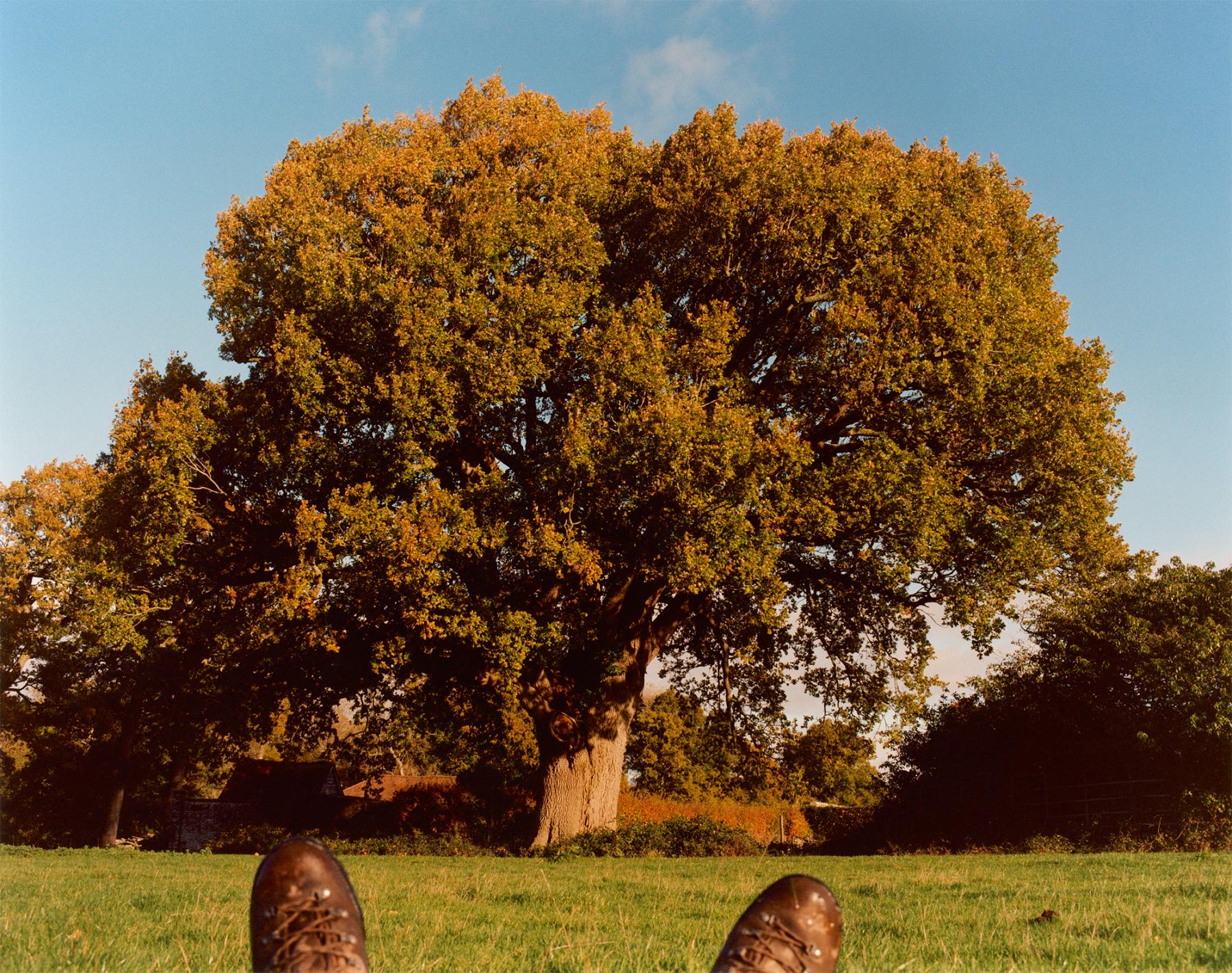
The Knepp Oak
In 1999, before the rewilding project started, the tree expert Ted Green visited the estate to look at the ancient Knepp Oak, which is next to the castle. He told Isabella that it was about 550 years old and should live for another 400, but that the ones adjacent to it in the Repton-designed park were under threat, their roots having been damaged by intensive ploughing and chemical use since the Second World War.
“Rewilding is restoration by letting go, allowing nature to take the driving seat,” Isabella writes in Wilding. Along with fallow deer, red deer, Exmoor ponies and Tamworths, the cattle are allowed to roam, and the animals’ interaction with the landscape — their different eating habits and their rutting and rootling — helps to encourage a naturally biodiverse wilderness. There is minimal human intervention; the animals, left to their own devices, instinctively know that nettles and sallow have medicinal properties and they find sufficient nutrition from the mix of vegetation to live and breed without needing additional feed or shelter.
“Too many animals and it would become a very species-poor grassland, and you get rid of all the vegetation, like the heavily grazed areas we are familiar with in farming,” Isabella says as we climb out of a Pinzgauer safari vehicle to get a closer look at the magnificent droopy-horned cows. “Too few and that thorny scrub would turn into trees and become very species-poor closed-canopy woodland.” The result of this balanced approach is a landscape that looks closer to African scrub (Isabella calls it “the Serengeti effect”) than either the traditional open pasture or woodland to which we are accustomed.
Initially, locals were horrified at what appeared to them to be out-and-out neglect of the land. In 2003, after Charlie and Isabella’s presentation to 50 neighbouring farmers and landowners, it was made clear to them that their rewilding idea was, as Isabella puts it in her book, “an affront to the efforts of every self-respecting farmer, an immoral waste of land, an assault on Britishness itself.” But in the ensuing years, locals, and indeed other landowners, have started to come round to the ideas piloted at Knepp. “A lot of it is fear of change, and once it has changed you get used to it,” Isabella says now. “They hear the birdsong and think, I can live with this.” She lists landowners from Northumberland to Norfolk and on to Dartmoor who are beginning to rewild.
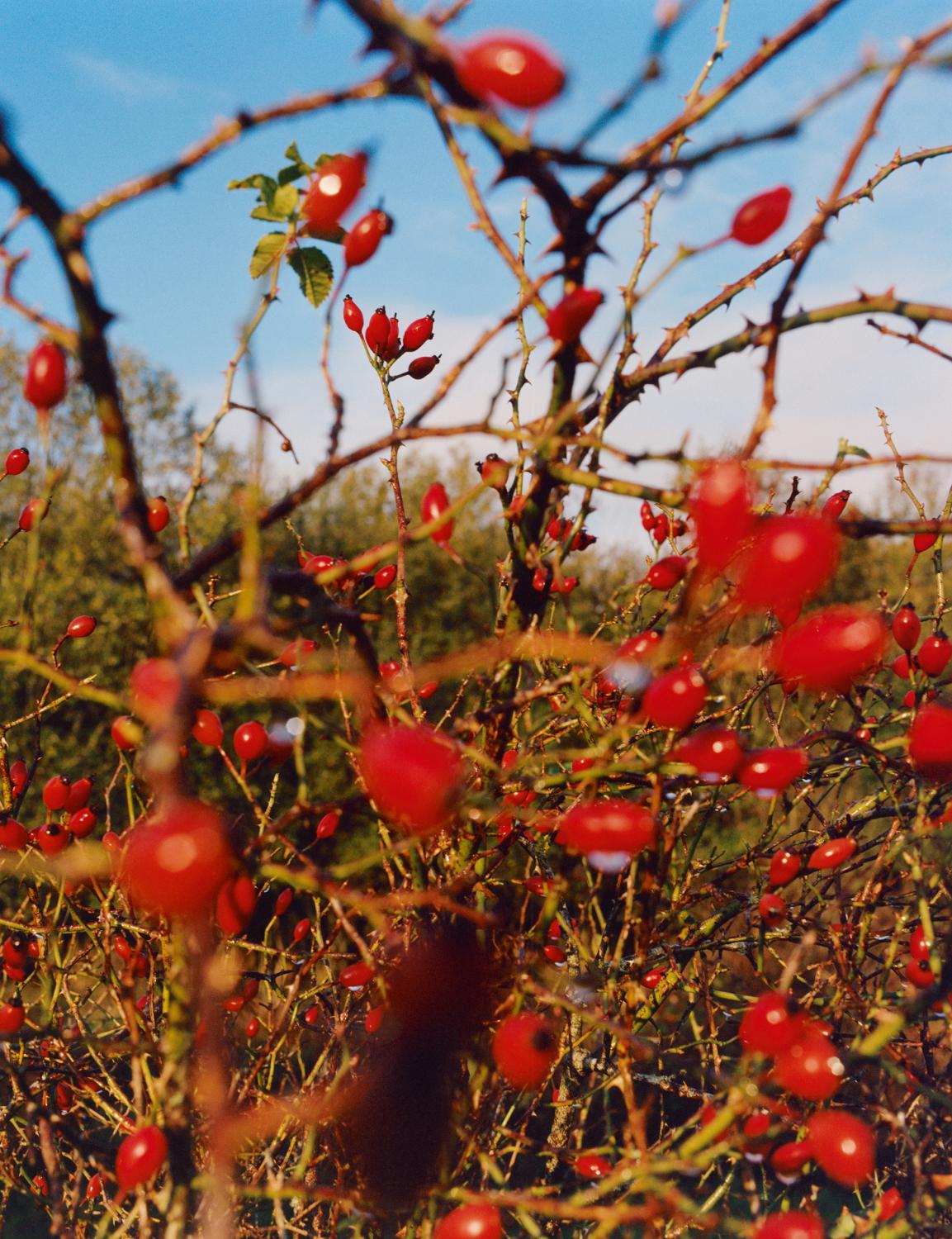
Thorny scrub
In less than 20 years, Knepp has become home to one of the densest populations of songbirds in Britain. The thorny scrub — which includes dog rose, hawthorn, blackthorn, gorse and bramble — is important as nesting protection and also as a food source. There was a bumper crop of berries last year. “I think we’ll see farmers who are farming marginal land, where it just doesn’t pay, doing more wilding,” Isabella says.
Knepp’s income comes from government grants for environmental services such as floodplain management and from its solar farm, which generates electricity for the national grid. They also rent out 130,000 square feet of post-agricultural building space to small local businesses, which not only generate income for the estate but also employ 200 people. In 2020, Knepp sold 75 tonnes of live-weight organic wild venison, beef and pork. While there are no plans to increase these volumes — it would mean stocking more animals, to the detriment of the habitat — they have launched a range to sell online directly to the consumer and invested £700,000 in a state-of-the-art butchery, processing and packing facility, with hopes of soon adding an abattoir.
Isabella is at pains to point out that all this is an offshoot of the conservation project, as is their ecotourism business, which took off after conservation groups like the Wildlife Trust and the Royal Society for the Protection of Birds beat a path to the estate to see the purple emperor butterflies, the nightingales and turtle doves. So while the estate’s bountiful wildlife and biodiversity are the real markers of its success, the former farmland now earns double the gross margin of a typical farm on quality arable land, according to the Savills benchmark. “We really are a viable business, having gone from being totally unviable,” Isabella says. “When we opened the calendar for 2021, it was like Glastonbury — the site crashed.”
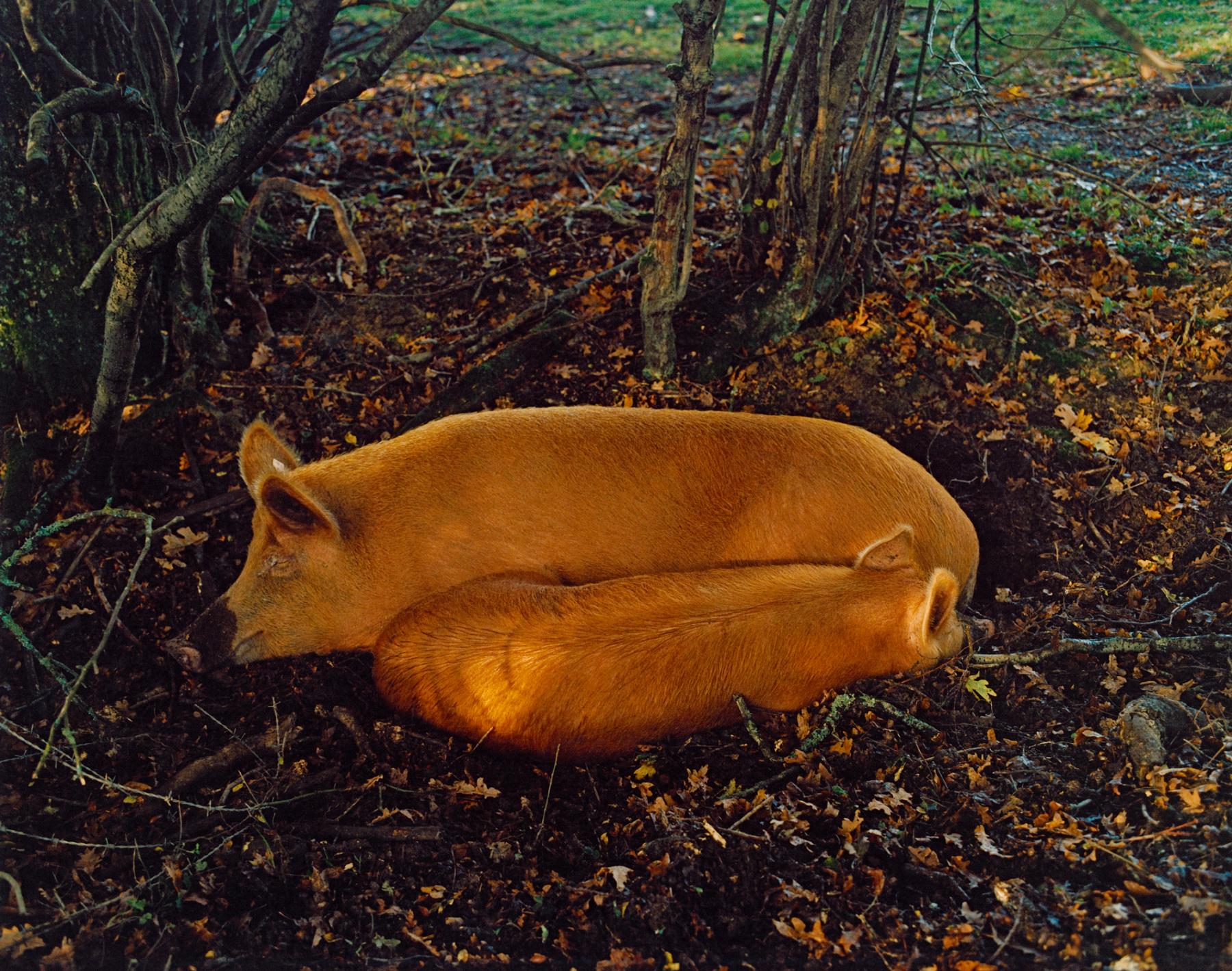
Tamworths
There was a massive acorn drop last autumn. “The pigs gorge on them,” Isabella says. “They put on so much fat, it’s phenomenal. They just balloon. Last spring before the new grass came up, we were seeing all these pigs in the ditches full of water with their heads under, blowing bubbles, and coming up crunching acorns that had fallen from overgrowing oaks. They really are ingenious creatures.”
Born in September 1964, Isabella was adopted by Lady Anne Tree, a philanthropist and prison visitor who founded Fine Cell Work to create mindful, dignified employment for prisoners, and Michael Tree, an artist and director of Colefax and Fowler, founded by his influential interior decorator mother, Nancy Lancaster. “The whole of life turns on a sixpence, but it really makes you aware of it if you are adopted,” Isabella says.
She remembers a childhood of enormous freedom, spending days out on her bike, building dens for hours on end. At weekends, her parents would invite friends for house parties and dinners. “There was always intellectual debate and conversation going on, and anyone from Cecil Beaton to my great-uncle David Cecil, who was an Oxford don, to novelists and artists. Diana Cooper often came to stay.”
Holidays, too, were like something from another era. Isabella’s mother would take them off to visit a family friend in Kashmir. “We had a caravan of ponies and mules which we loaded up with tents and bags and chickens and ducks, and we went up to 15,000 or 16,000 feet on a trek which lasted 10 days or two weeks. It was quite a thing.” Her mother was a keen botanist, and Isabella and her sister, Esther, would collect flowers to stick into their scrapbooks as they made their way through the Himalayas. They were encouraged to keep journals. “We travelled like Edwardians or Victorians. We had huge carpetbags full of wildflower presses, and my father had his wooden shoe trees and tons of tobacco for his pipes, and hardback books.”
Isabella was sent to a convent school but was expelled after creating her own pagan shrine. She was also expelled from Canford School (“I’m afraid”), before ending up at Millfield. A close family friend, Iris Murdoch, advised her to study classics, but she twice failed the entrance exams for Oxbridge. “I think it knocked some of the cockiness off me,” she says. “I’d walked through my O-levels, and it made me realise things weren’t going to fall into my lap.” Isabella did study classics, at the University of London. She then became a travel writer, working for the London Evening Standard and Geographical magazine. She and Charlie met through friends at Millfield, married in 1993, and have two children, Nancy, 25, and Ned, 24.
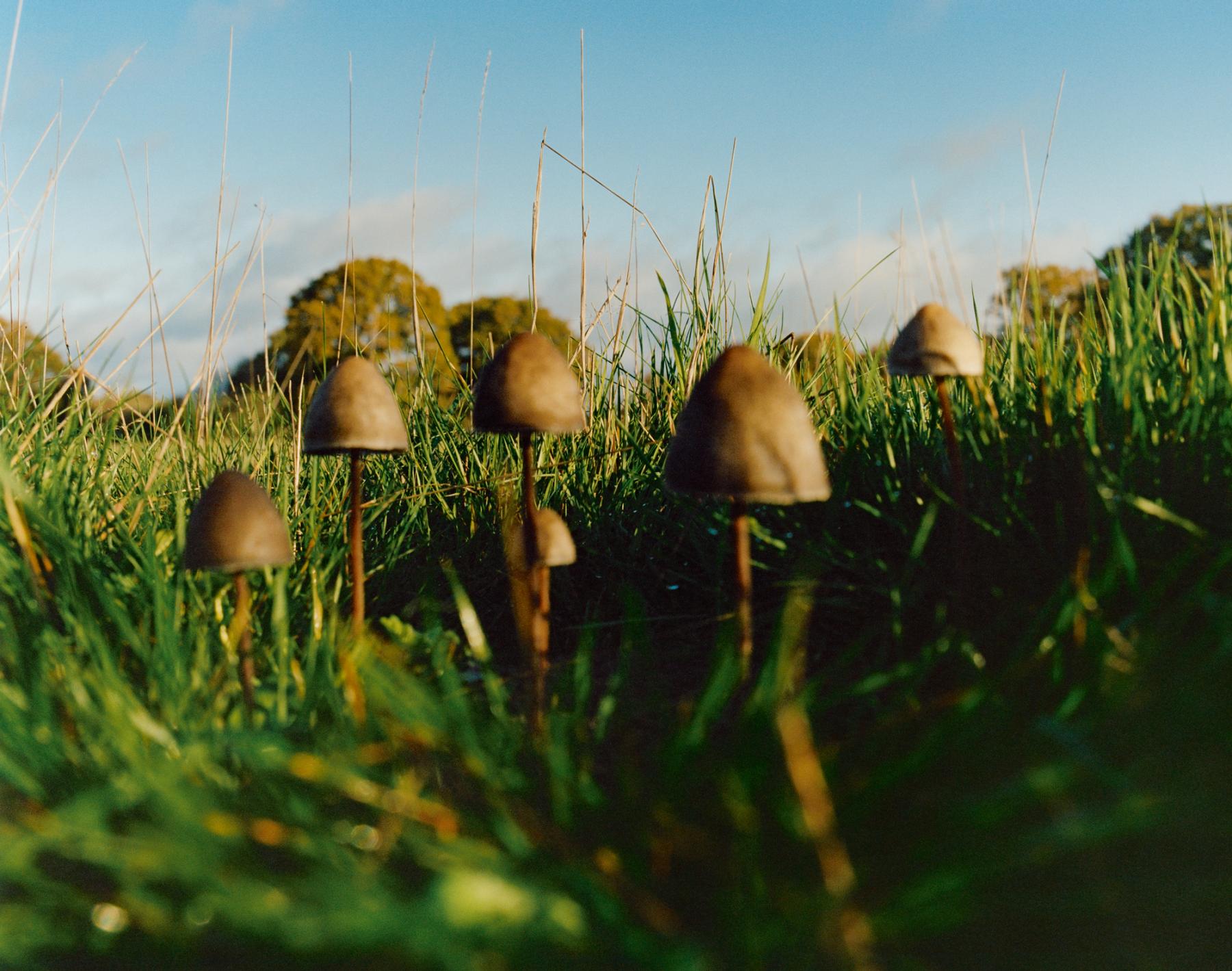
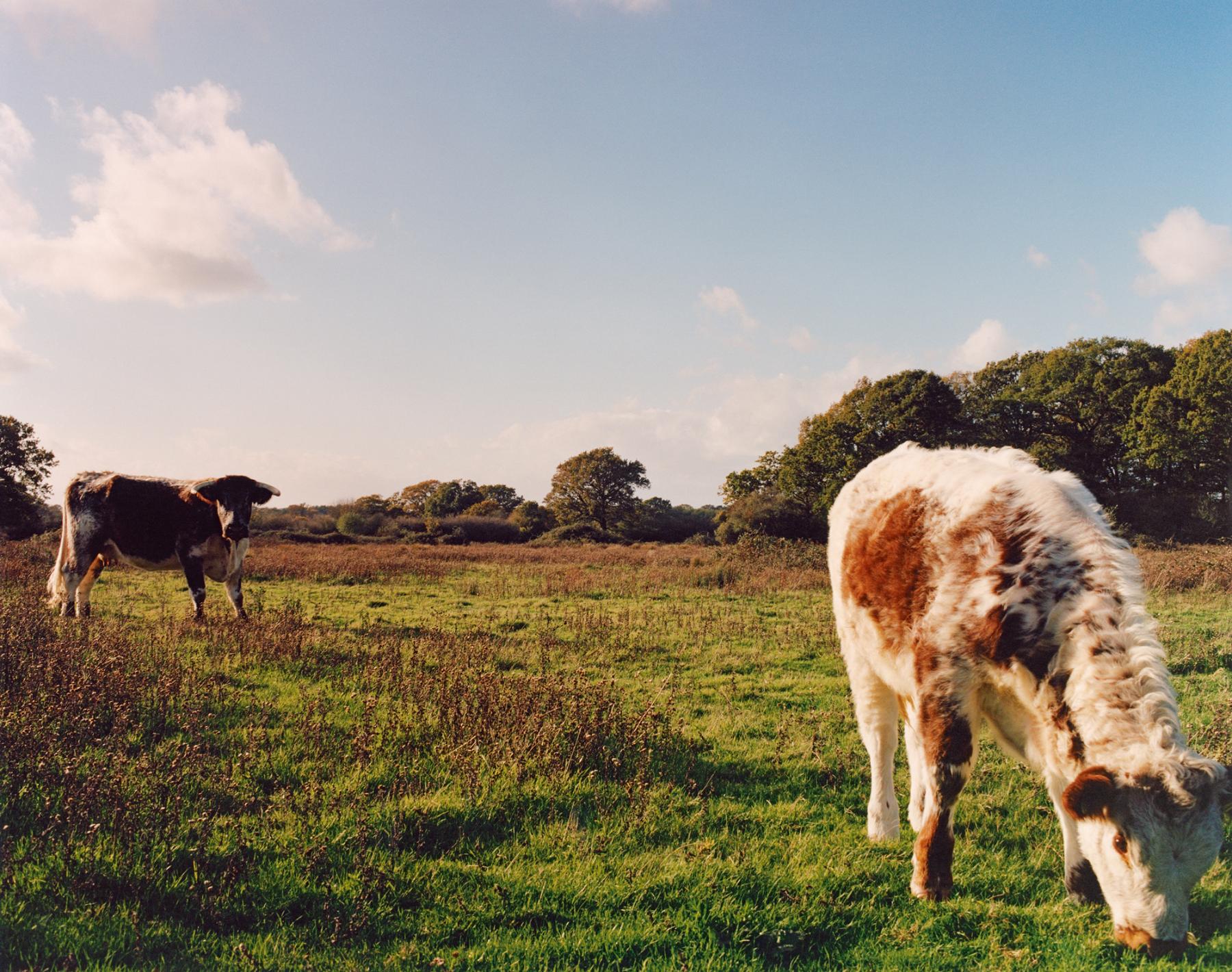
Fungi and Longhorns
The earth at Knepp is alive with nutrients, microbes and insects. The rotting leaves of the oak trees provide the perfect breeding ground for all manner of fungi, including milk caps, boletes, puffballs and parasols. On the right, the free-grazing animals on Knepp all feed in ways that have differing effects on the vegetation, Isabella says. The longhorns tear it with their tongues. Horses and ponies nibble and make things shorter. “Animal dung needs another stage of digestion for it to be taken down effectively into the soil,” she adds, “which is the job of dung beetles and other coprophagous insects.”
The project at Knepp has taken over their lives. It has been endlessly challenging, but it seems as if the sixpence has spun in Isabella’s favour once more. The government’s new sustainable farming road map, launched in November 2020, provides incentives for farmers and pays for local nature recovery activities, including habitat restoration and natural flood and species management. Knepp’s rewilding project has become a blueprint for other farmers keen to use their land to help regenerate nature.
Meanwhile, the pandemic has accelerated our desire to connect with nature. “I think just hearing birdsong, being able to take time, down tools and actually listen — nature opens up for you.” But Isabella wants to push us to go further. We need more nature, she says, and she sees opportunities everywhere. The Wilding Handbook will be published next year to make the science and practicalities as accessible as possible, “to change a mindset, to give ourselves permission to get messy. There are more gardens acreage-wise than there are nature reserves in Britain, and if people could manage their gardens better — less — and organically, that could have an enormous effect on wildlife. It doesn’t matter what patch of earth you are in charge of, even if it’s your window box; you can move further down that scale to get wilder.”
As for Knepp, “Normally the ethos of the rewilding project is to see what will come back and not to try and intervene,” Isabella says. “But there are some species that just won’t, like beavers. White storks are another.” Knepp introduced storks in 2016, and last year a pair — one from the breeding programme, the other a “vagrant” — had chicks, the first free-living storks in Britain for 600 years. As we wander the estate, we spot a stork in the grass. “You realise why they have those long legs,” whispers Isabella. “They walk through long grass and, with amazing precision, pick off all the insects that fly out from their feet. They make this incredible bill clattering — you can hear it from miles away.”
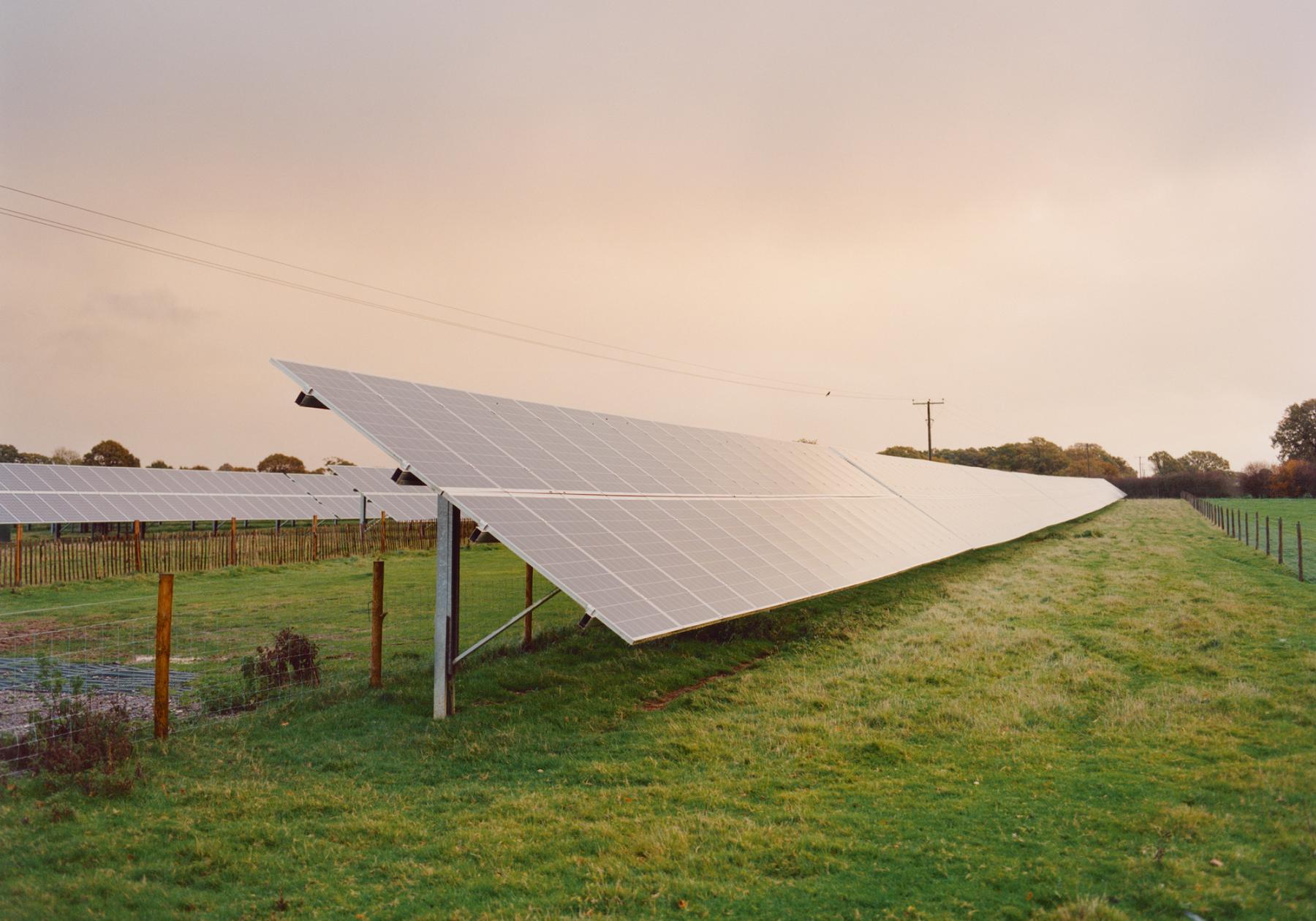
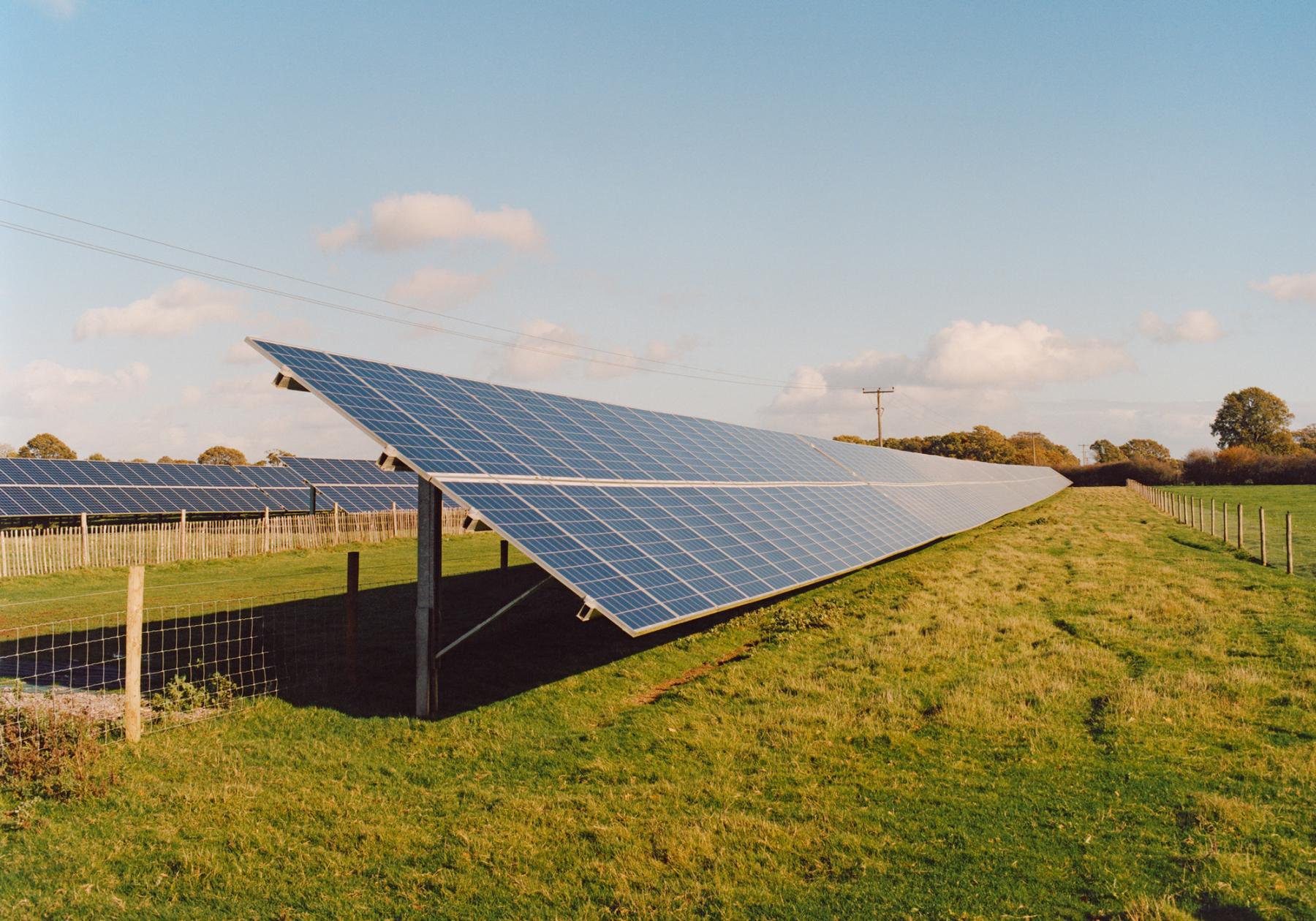
Photovoltaics
A solar farm, set up eight years ago with a government grant, lies next to Knepp’s safari and campsite base at the former New Barn Farm buildings. The photovoltaic cell field covers three acres, less than 0.1 per cent of the estate’s 3,500, and provides the national grid with 900,000 kilowatt hours per year — the equivalent of all the electricity used in all the properties on the estate (including the tenanted ones).
In November 2019, Isabella was invited on to Desert Island Discs. As her seventh pick, she chose a 1942 recording of a nightingale singing. “It is really astonishing, isn’t it?” she says from her study when we speak during the November national lockdown. “You hear the nightingale for ages, and then slowly, slowly, you hear the thrum of bombers in the distance, and you can’t really work out what it is. And they get louder and louder, but you hear the nightingale’s voice trying to project itself above the sound of the bombers as they get closer. It’s very moving.” Nightingales started to return to Knepp about seven years into the project. “When you think nightingales have declined 97 per cent since the 1960s — they’d already declined since the 1940s, so our baseline shifts all the time — we are looking at catastrophic losses. And that’s what’s so amazing about this: it shows how quickly it could come back. If you let it.”
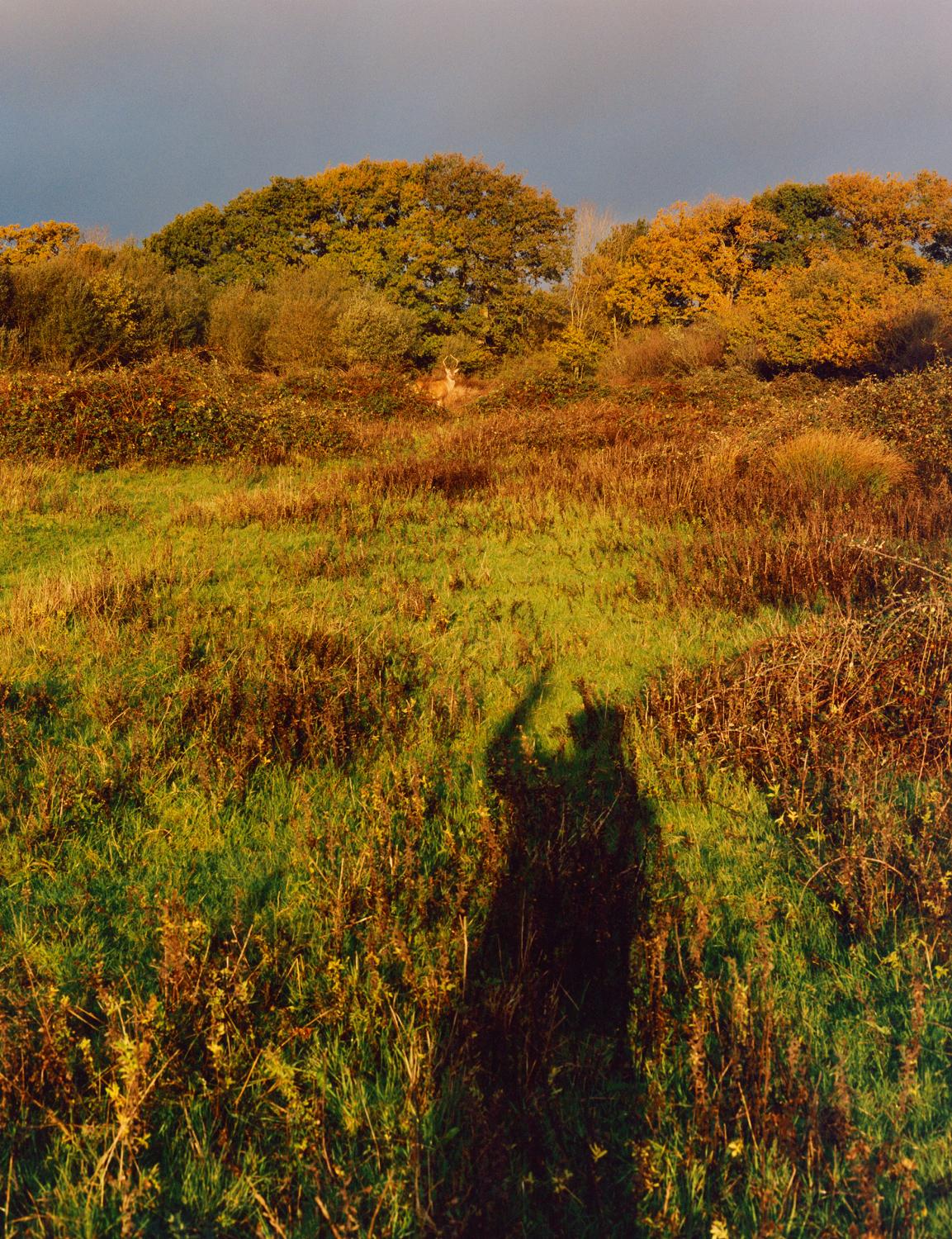
Tamsin BlanchardThe fabulously erudite Tamsin Blanchard is one of fashion’s most esteemed writers and activists, advocating for greater sustainably before the term was even coined. She is a member of Fashion Revolution’s Global Coordination Team and is the curator of Fashion Open Studio, two pathbreaking organisations…read more Photography
Jamie HawkesworthFrom Suffolk on the east coast of England, Jamie Hawkesworth is one of the most prolific photographers working today. Initially destined for the forensics lab, his introduction to photography came through a class on crime scene documentation while studying at the University of Central Lancashire. The…read more
Photographic assistance: Cecilia Byrne.
This profile was originally published in The Gentlewoman nº 23, Spring & Summer 2021.